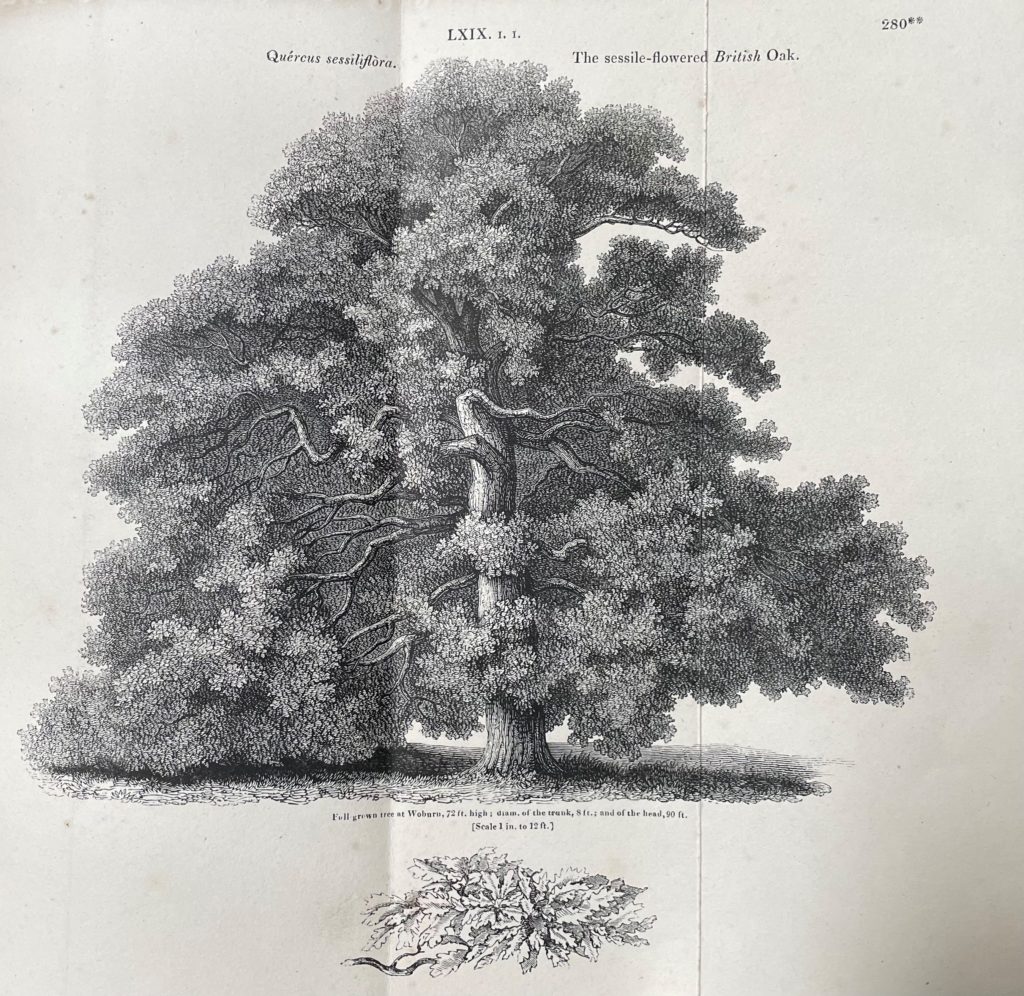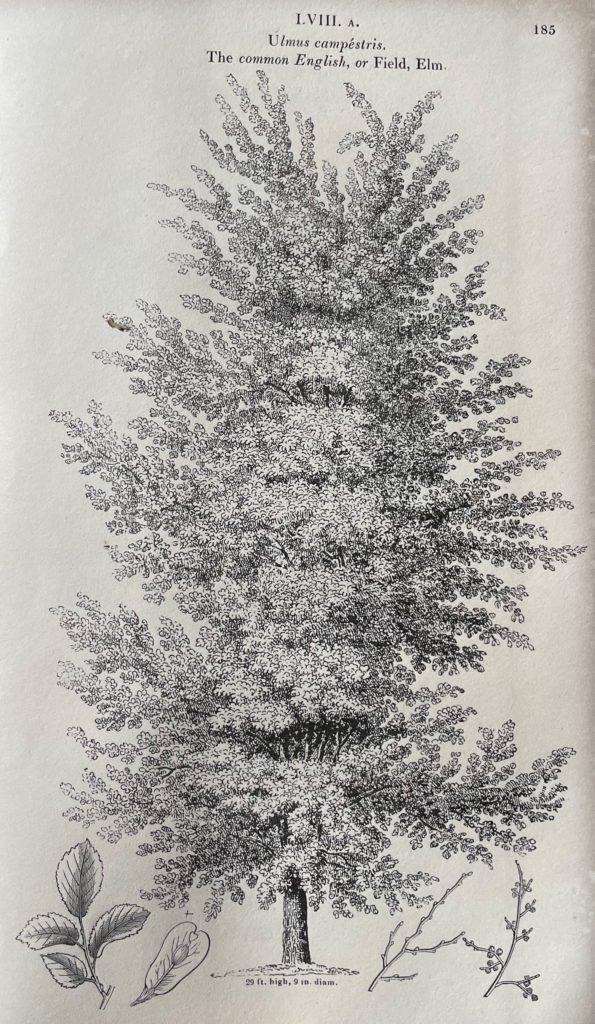Out of the woods
Though we are not quite out of the woods yet, we are delighted to welcome back our members and volunteers - and to meet new members. Our summer display in the Outer Library is a selection of poetry inspired by trees and spanning four centuries, from Robert Herrick’s ode to the willow to A. E. Housman’s celebration of the blossoming cherry – the loveliest of trees. Our display is organised in collaboration with Exeter Cathedral Library and Archives to celebrate Love Your Burial Ground Week, 5-13 June 2021.

Trees inspire and express feelings of love and loss, decay and renewal, death and life. Ancient trees – eyewitnesses to the past, present and future – symbolise the continuity of human existence. While evergreens signify permanence, deciduous trees manifest the eternal ebb and flow of the natural world, from leaf falls in autumn to new blossoms in spring. For centuries, poets have used the language of trees to articulate the human condition: the willow, sadness; the sturdy oak, courage and strength; the yew, immortality, the apple tree, sexual temptation, the hazel, reconciliation; the chestnut, honesty. All sustain, shelter and protect.

Weeping willow
Robert Herrick (1591-1674)
‘To the willow-tree’
Love is a recurring theme in pastoral poetry. In Robert Herrick’s poem, the weeping willow symbolises lost love. It is ‘the only true plant’: it offers comfort to ‘distrest’ lovers, and ‘cooling shade’ to ‘love-spent’ youths and ‘love-sick’ maids who come to mourn and to ‘weep out the night’.
William Wordsworth (1770-1850)
‘Our walk was among the ancient trees’
Wordsworth’s daily rambles in his beloved Lake District immersed him in nature, and he created some of his best-loved poems while walking. He believed that landscapes hold memories, thoughts and feelings. In this poem, he describes a woodland walk, ‘made by Nature for herself’. It is so beautiful that he imagines that ‘in his death-hour’ the image of the wood will ‘survive among his thoughts’.

British oak
George Gordon, Lord Byron (1788-1824)
‘To an oak at Newstead’
In 1798, the young Byron inherited the Newstead Abbey estate. He planted an oak tree seedling and tended it carefully. Later, he returned to discover his oak tree neglected and choked with weeds. In his poem, Byron hopes his tree will thrive and outlive him – thereby ensuring that he ‘shall ne’er be forgot’. Byron got his wish; he died aged 36 while his oak went on to survive another hundred years or so.

Common English elm
John Clare (1793-1864)
‘The shepherd’s tree’
A Romantic poet, Clare celebrated the permanence and continuity of the natural world. The mighty elm is ‘notched and scarred’ with fragments of stories from the past. So, the shepherd stretches out on its roots in ‘careless attitude’ to ‘reflect on times and deeds and darings that have been’, and to hum ‘vain imaginings’ of the future.
Emily Brontë (1818-1848)
‘Death’
In Emily Brontë’s poems, the natural world offers an analogy to the human condition. In ‘Death’, the tree serves as an extended metaphor for the life-death cycle. Death is a beginning, not an end: ‘other boughs may flourish where that perished sapling used to be … its mouldering corpse will nourish that from which it sprung – Eternity’. Emily Brontë’s poems were published alongside those of her sisters, Charlotte and Anne, together with Charlotte’s novel, The professor, in 1880.

Cherry tree
A. E. Housman (1859-1936)
‘Loveliest of trees’
Passing through a woodland in spring, the narrator, aged twenty, admires the cherry trees, ‘hung with bloom’. Such beauty prompts him to measure out his remaining years in spring-times – ‘take from seventy springs a score, it only leaves me fifty more’. Since ‘fifty springs are little room’, he vows to make the most of his time in the woodland.
William Butler Yeats (1865-1939)
‘The falling of the leaves’
Yeats likens the passing of ‘the season of passion’ to the falling leaves in autumn. The season hangs over and above, heavy and melancholic; even his lover’s brow is ‘drooping’. The leaves of the rowan tree are yellowing while love is ‘waning … weary and worn’; with ‘sad souls’ the lovers part ‘with a kiss and a tear’.
Poets on display
Robert Herrick (1591-1674)
‘To the willow-tree’William Blake (1757-1827)
‘A poison tree’William Wordsworth (1770-1850)
‘Our walk was far among the ancient trees’George Gordon, Lord Byron (1788-1824)
‘To an oak at Newstead’John Clare (1793-1864)
‘The shepherd’s tree’Alfred, Lord Tennyson (1809-1892)
‘The talking tree’Emily Brontë (1818-1848)
‘Death’Christina Rossetti (1830-1894)
‘An apple gathering’Thomas Hardy (1840-1928)
‘The tree – an old man’s story’A.E. Housman (1859-1936)
‘Loveliest of trees’William Butler Yeats (1865-1939)
‘The falling of the leaves’

Emma Laws, Director of Collections and Research
The illustrations are taken from the Institution’s copy of J. C. Loudan’s Arboretum et fruticetum Britannicum, published in eight volumes in 1838.

